
Romanticism - V
Pre-Raphaelites
Edward Burne-Jones
1833 - 1898
Sir Edward Coley Burne-Jones, 1st Baronet, (28 August, 1833 – 17 June, 1898) was an English painter and designer associated with the Pre-Raphaelite Brotherhood's style and subject matter.
Burne-Jones worked with William Morris as a founding partner in Morris, Marshall, Faulkner & Co in the design of decorative arts.
Burne-Jones's early paintings show the influence of Dante Gabriel Rossetti, but by 1870 he had developed his own style. In 1877, he exhibited eight oil paintings at the Grosvenor Gallery (a new rival to the Royal Academy). These included The Beguiling of Merlin. The timing was right and Burne-Jones was taken up as a herald and star of the new Aesthetic Movement.
In the studio of Morris and Co. Burne-Jones worked as a designer of a wide range of crafts including ceramic tiles, jewellery, tapestries, and mosaics. Among his most significant and lasting designs are those for stained glass windows the production of which was a revived craft during the 19th century. His designs are still to be found in churches across the UK, with examples in the US and Australia.
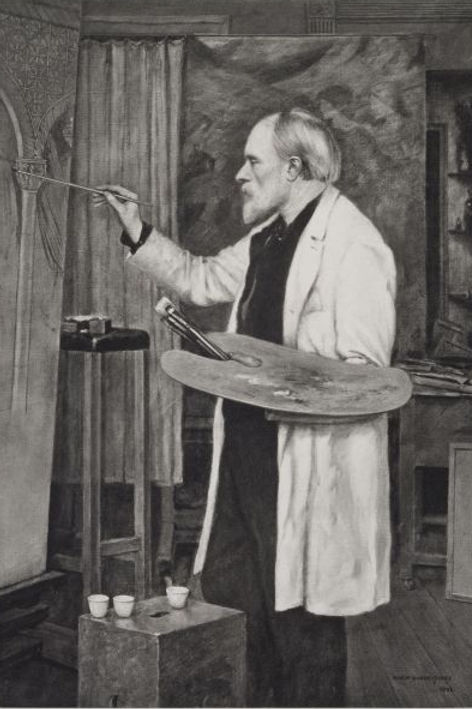
Photogravure of a portrait of Edward Burne-Jones by his son Philip Burne-Jones,
1898

Portrait of Georgiana Burne-Jones, with Philip and Margaret
1883

The Last Sleep of Arthur in Avalon
between 1881 and 1898

Sidonia von Borcke
1860

The Beguiling of Merlin
1874

The Beguiling of Merlin
1874

The Princess Sabra Led to the Dragon
1866

Portrait of Maria Zambaco
1870

Phyllis and Demophoön
1870

Temperantia
1872

Pan and Psyche
1874

An Angel Playing a Flageolet
1878

The Heart Desires
1868–1870

The Hand Refrains
1868–1870
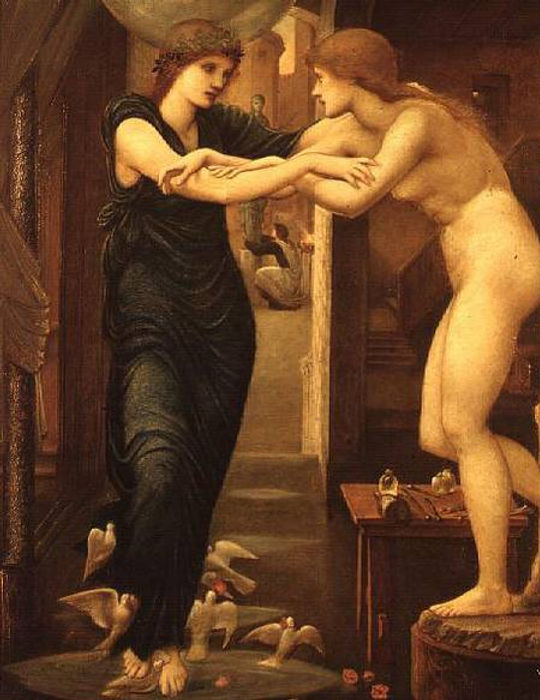
The Godhead Fires
1868–1870

The Soul Attains
1868–1870

The Love Song
1868-77

"The Briar Wood" from the "Legend of Briar Rose"
1890
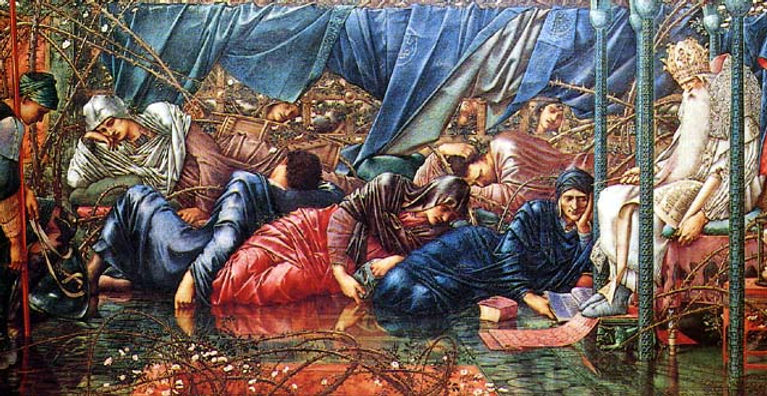
"The Council Chamber" from the "Legend of Briar Rose"

"The Garden Court" from the "Legend of Briar Rose"

"The Rose Bower" from the "Legend of Briar Rose"

The Garden of Pan
1886-87

Love Among the Ruins
1873

The Mirror Of Venus
1898

Garden of the Hesperides

The Wine of Circe
1900

The Call of Perseus
1877

The Arming of Perseus
1885

The Baleful Head (The Perseus Cycle)
Perseus holding Medusa's head in his left hand. He is encouraging Andromeda to look at its reflection in a well so that she will not be turned to stone by Medusa's gaze.

The Finding of Medusa
1882

The Death of Medusa
1882

The Rock of Doom
1885-1888
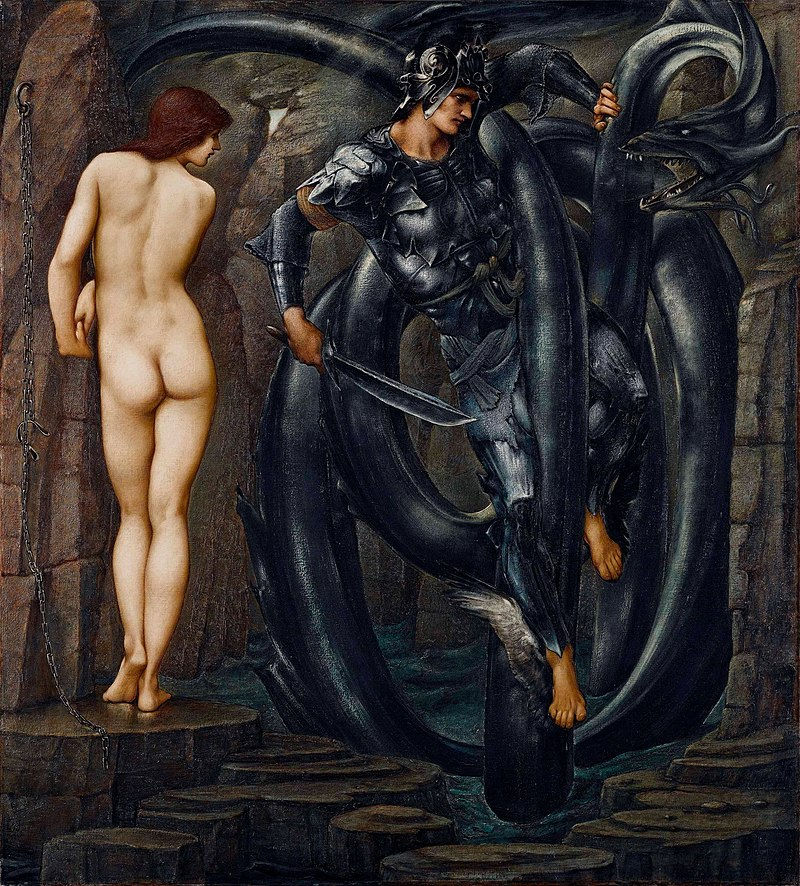
The Doom Fulfilled
1888

Atlas Turned to Stone
1878
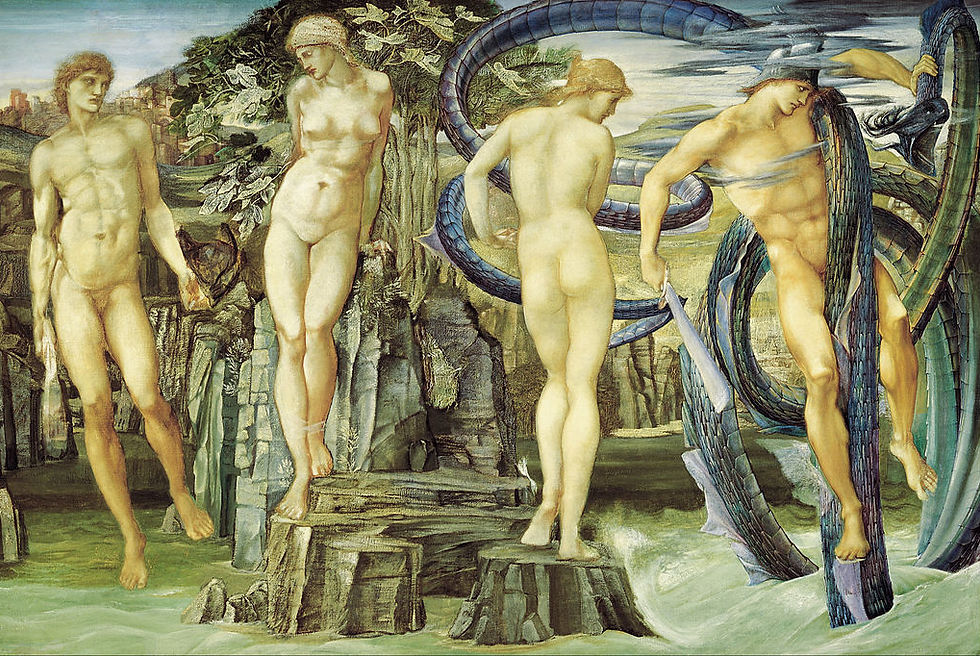
Perseus and Andromeda
John William Waterhouse
1849 - 1917
John William Waterhouse (6 April 1849 – 10 February 1917) was an English painter known for working first in the Academic style and for then embracing the Pre-Raphaelite Brotherhood's style and subject matter. His paintings are known for their depictions of women from both ancient Greek mythology and Arthurian legend. A high proportion depict a single young and beautiful woman in a historical costume and setting, though there are some ventures into Orientalist painting and genre painting, still mostly featuring women.
Born in Rome to English parents who were both painters, Waterhouse later moved to London, where he enrolled in the Royal Academy of Art Schools. He soon began exhibiting at their annual summer exhibitions, focusing on the creation of large canvas works depicting scenes from the daily life and mythology of ancient Greece. Many of his paintings are based on authors such as Homer, Ovid, Shakespeare, Tennyson, or Keats.

John William Waterhouse,
c. 1886

A Street Scene in Cairo
1873

Miranda
1875

The Remorse of the Emperor Nero after the Murder of his Mother
1878

Dolce far Niente
1880

Diogenes
1882

Consulting the Oracle
1884

The Magic Circle
1886

The Lady of Shalott
1888

Cleopatra
1888

Ophelia
1889

Circe Offering the Cup to Ulysses
1891
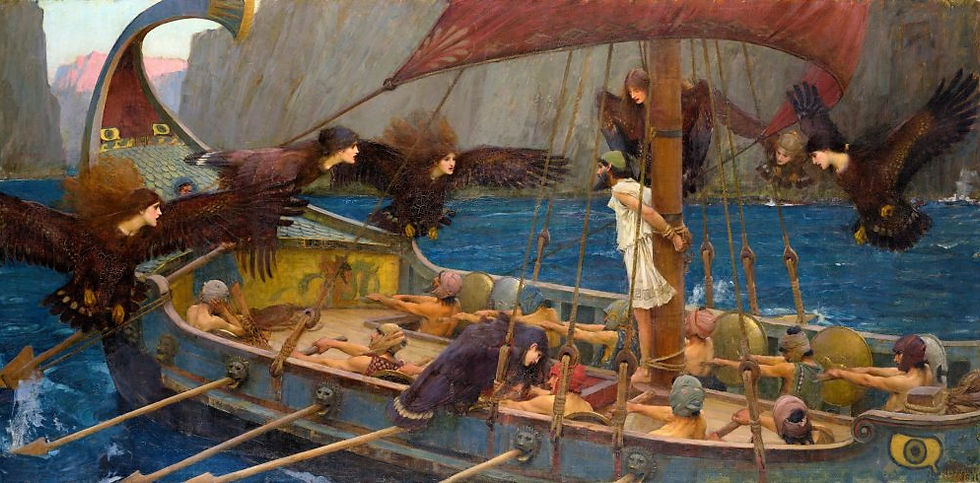
Ulysses and the Sirens
1891

Circe Invidiosa
1892
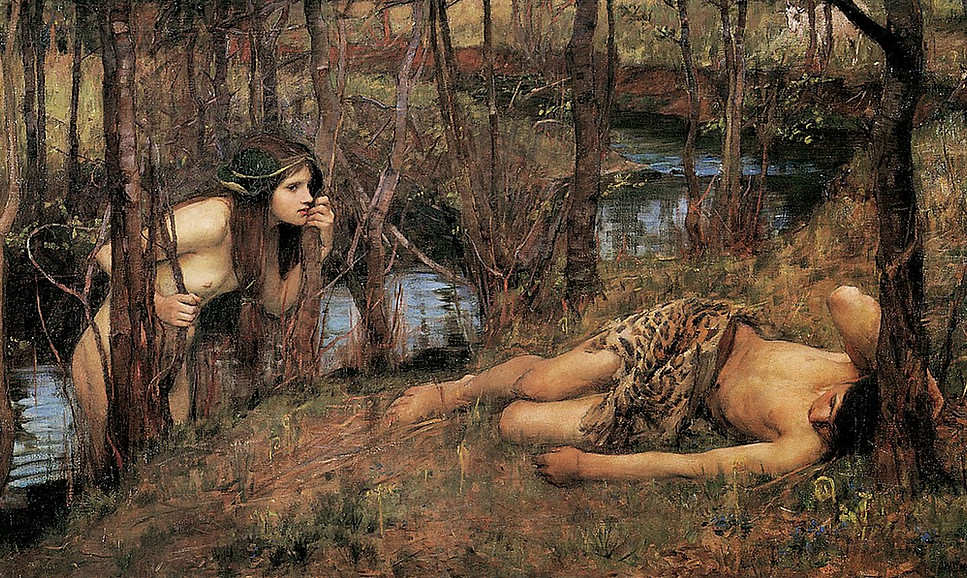
A Naiad or Hylas with a Nymph
1893

The Lady of Shalott Looking at Lancelot
1894

Ophelia
1894

Hylas and the Nymphs
1896

Pandora
1896

Ariadne
1898

The Siren
1900

Destiny
1900

The Lady Clare
1900

Nymphs Finding the Head of Orpheus
1900

The Mermaid
1901

Boreas
1903

Echo and Narcissus
1903

Gather Ye Rosebuds While Ye May…
1908

Gather Ye Rosebuds While Ye May
1909

The Sorceress
c. 1911-1915

Penelope and the Suitors
1912
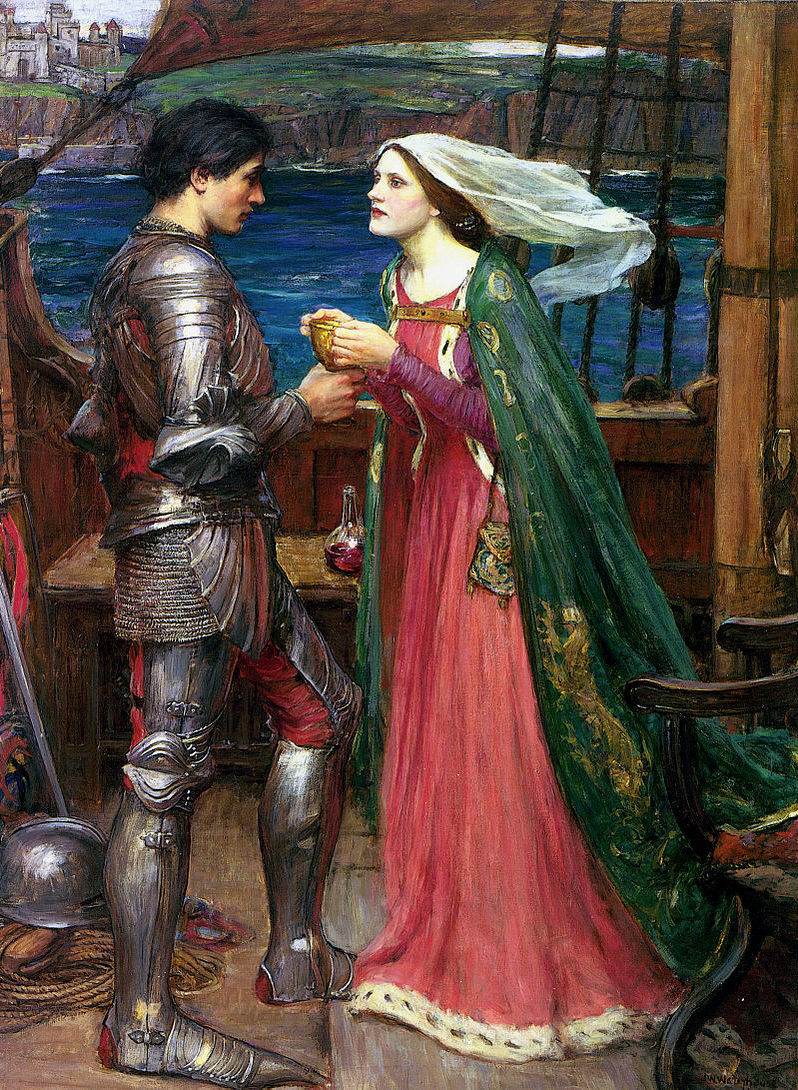
Tristan and Isolde
1916
John Collier
1850 - 1934
John Maler Collier (27 January 1850 – 11 April 1934) was a British painter and writer. He painted in the Pre-Raphaelite style, and was one of the most prominent portrait painters of his generation. Both of his marriages were to daughters of Thomas Henry Huxley. He was educated at Eton College, and he studied painting in Paris with Jean-Paul Laurens and at the Munich Academy starting in 1875.

Collier, Marian - Portrait of John Collier - circa 1882-1883

The Laboratory
1895

Collier's first wife, Marian Huxley, painted by her husband in 1883
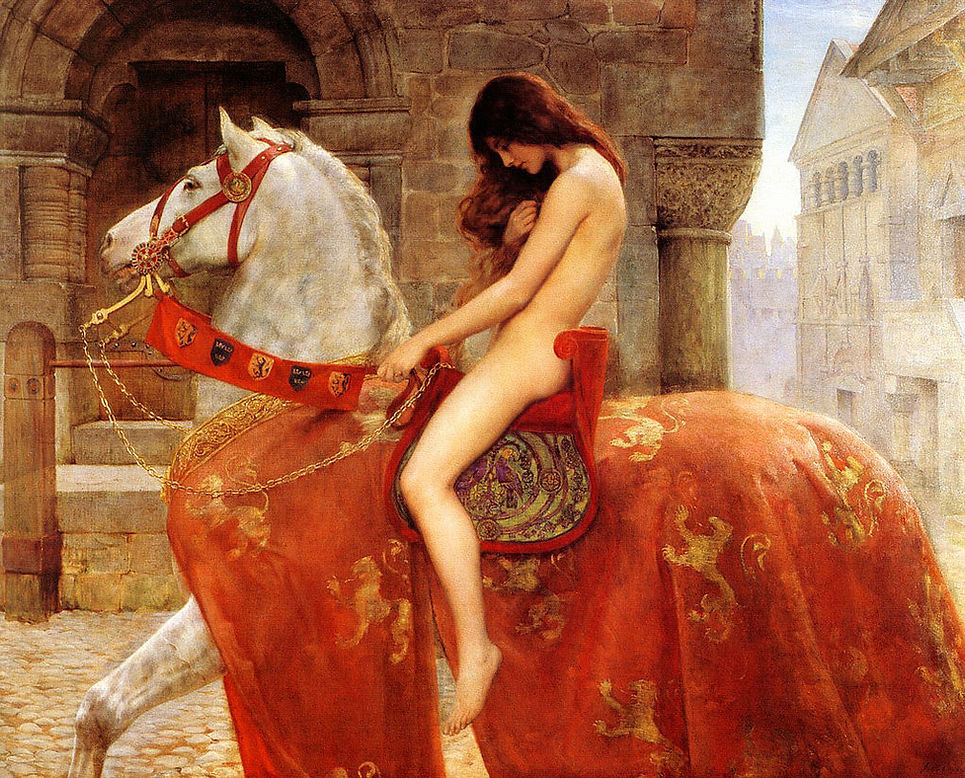
Lady Godiva
1898

Circe
1885

Angela McInnes
1914

Clytemnestra after the Murder
1882

Tannhäuser in the Venusberg
1901

Lilith
1887
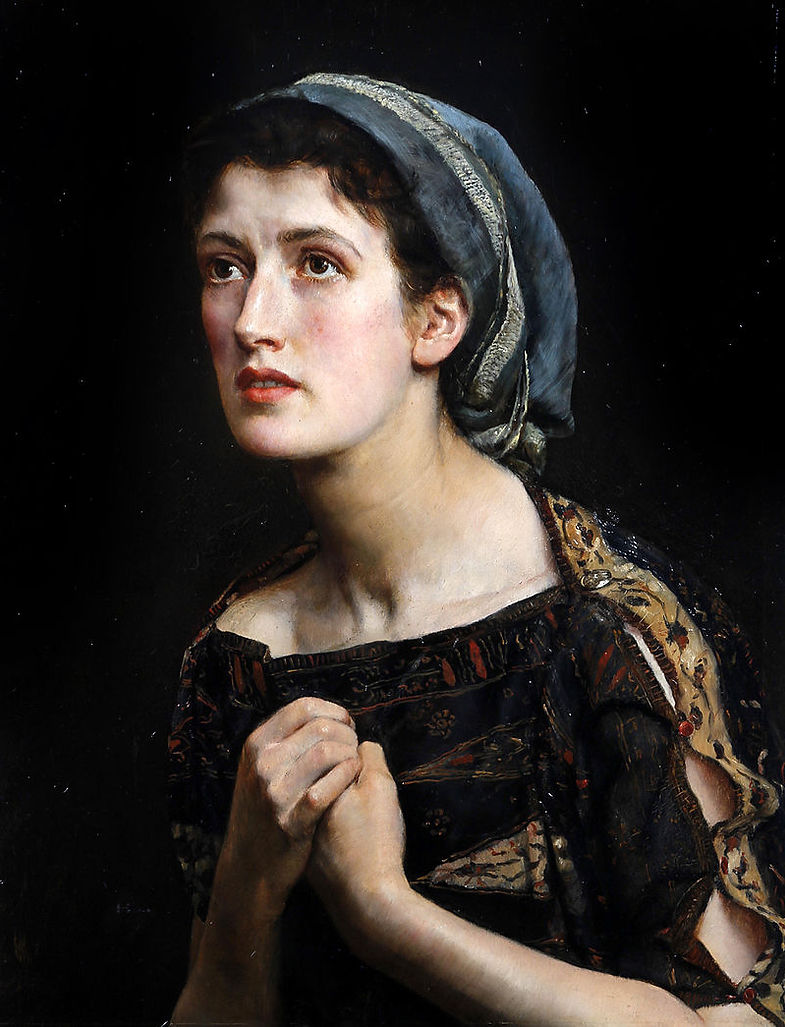
Cassandra
1885

All Hallowe'en
1895
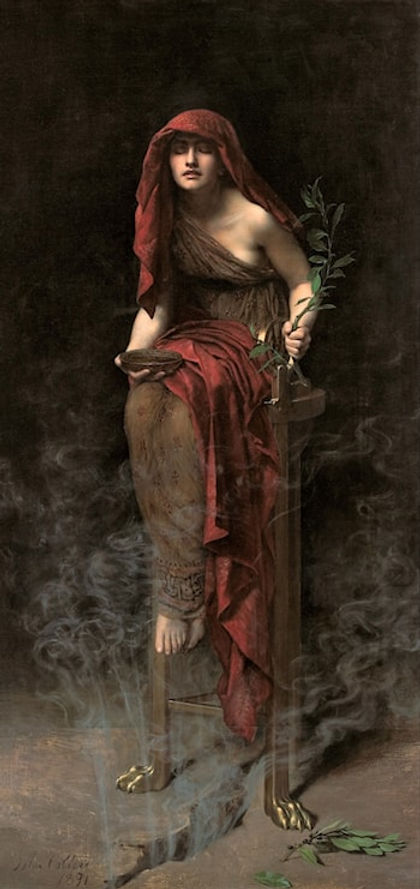
Priestess of Delphi
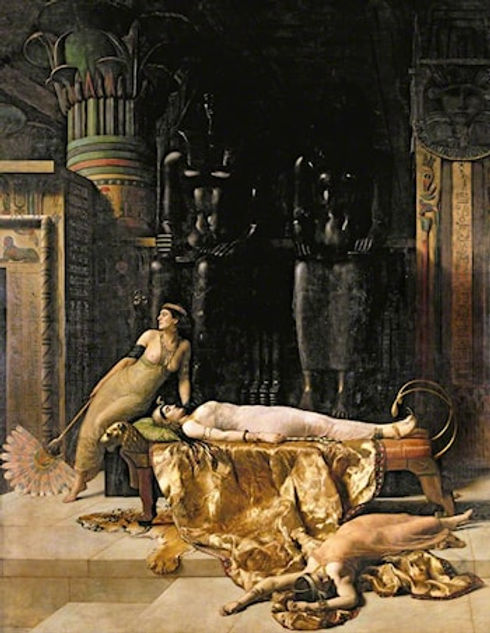
The Death of Cleopatra
1890

The Pharaoh's Handmaidens
1883

Mrs Osborne

Eve
1911

Horace and Lydia
1890
Edward Robert Hughes
1851 - 1914
Edward Robert Hughes (5 November 1851 – 23 April 1914) was a British painter, who primarily worked in watercolours, but also produced a number of oil paintings. He was influenced by his uncle and artist, Arthur Hughes who was associated with the Pre-Raphaelite Brotherhood, and worked closely with one of the Brotherhood's founders, William Holman Hunt.

Edward Robert Hughes
(photograph by Maull & Co., c. 1870)

Midsummer Eve
1908

Dream Idyll (A Valkyrie)
c. 1902

Heart of Snow

Idle Tears

Night with her Train of Stars

Summer Fantasy

The Valkyrie's Vigil
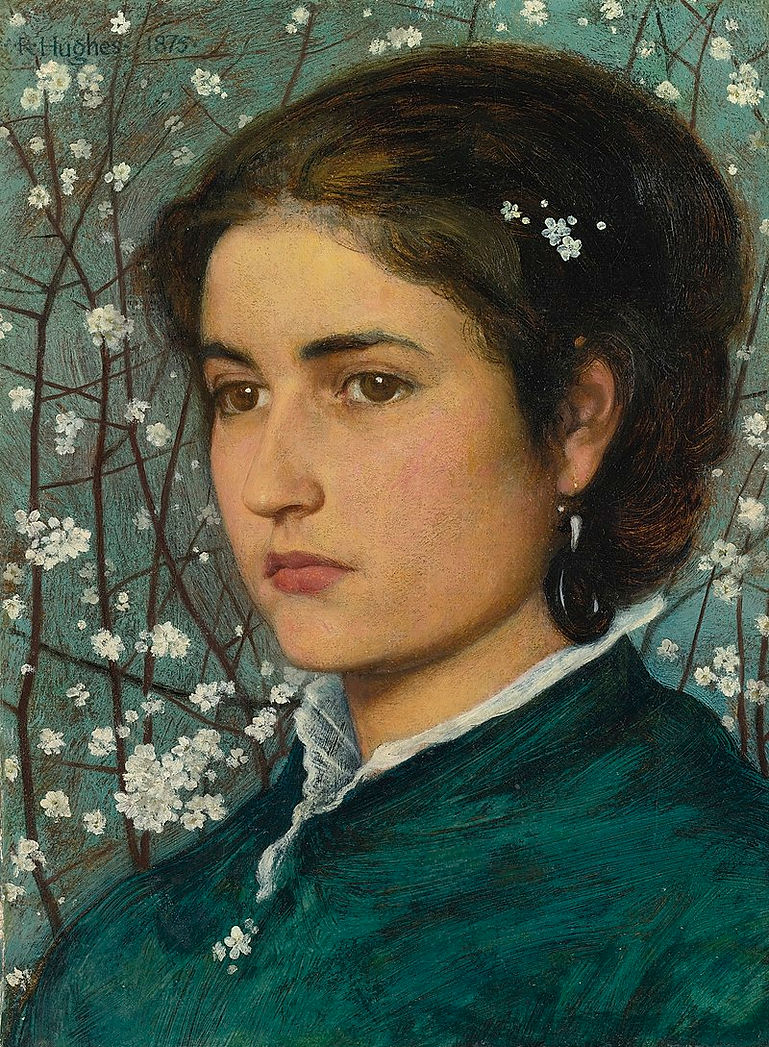
A Young Beauty

Hilda Virtue Tebbs
1897

Diana's Maidens
1898
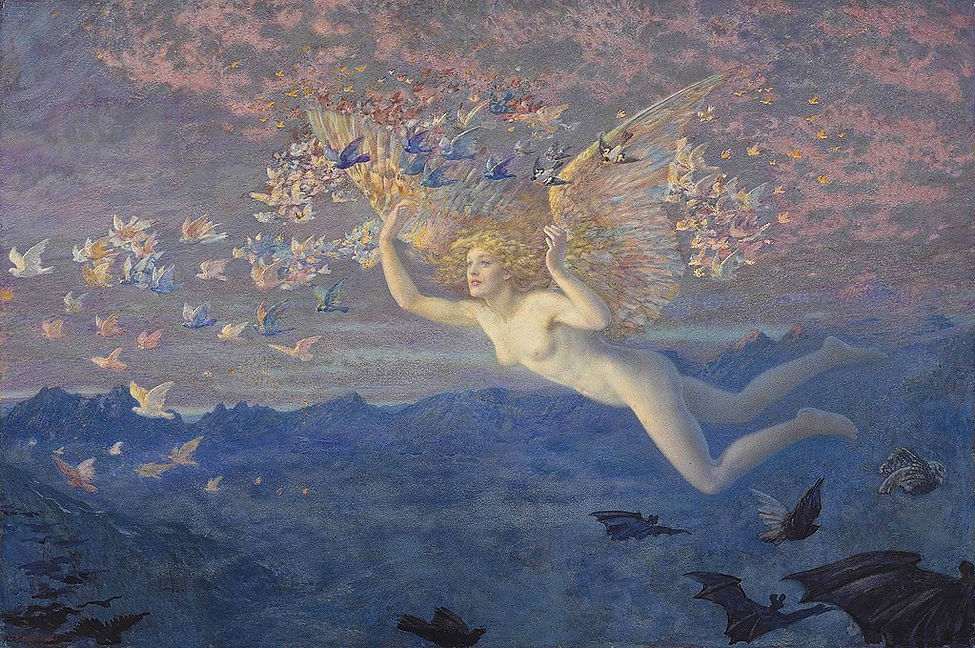
Wings of the Morning

Monna giovanna
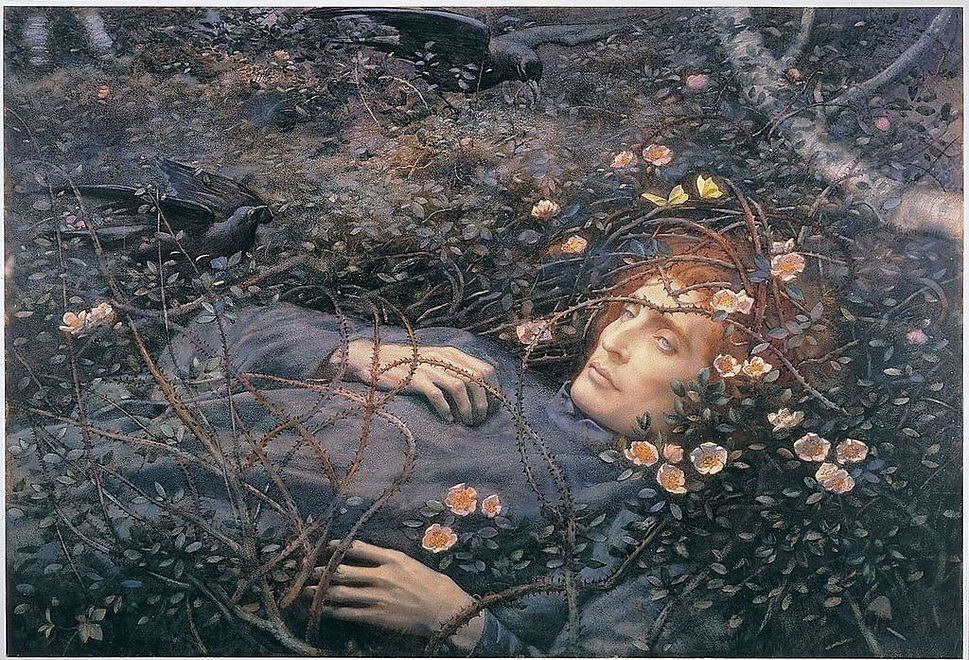
Oh, co je v té díře...?

The Princess Out of School

With the Wind

Day

In Dreams
Thomas Cooper Gotch
1854–1931

Thomas Cooper Gotch, self-portrait
Thomas Cooper Gotch
(1854–1931) was an English painter and book illustrator loosely associated with the Pre-Raphaelite movement; he was the brother of John Alfred Gotch, the architect.
Gotch studied art in London and Antwerp before he married and studied in Paris with his wife, Caroline, a fellow artist. Returning to Britain, they settled into the Newlyn art colony in Cornwall. He first made paintings of natural, pastoral settings before immersing himself in the romantic, Pre-Raphaelite romantic style for which he is best known. His daughter was often a model for the colourful depictions of young girls.
His works have been exhibited at the Royal Academy, Royal College of Art and the Paris Salon.
Thomas Gotch was born 10 December 1854 in the Mission House in Kettering, Northamptonshire. He was the fourth son born to Mary Ann Gale Gotch and Thomas Henry Gotch (born 1805), who was a shoe maker. He had an elder brother, John Alfred Gotch, who was a successful architect and author.
In 1881 he married fellow art student Caroline Burland Yates (1854–1945) at Newlyn's St Peter's Church. His daughter, Phyllis Marion Gotch was sometimes a model for her father. After completing his studies, Gotch travelled to Australia in 1883. Gotch and his wife settled in Newlyn, Cornwall in 1887. The couple and their daughter were key participants in the Newlyn art colony.
In addition to his time spent in France and Belgium while studying art, Gotch also travelled to Austria, Australia, South Africa, Italy and Denmark.
Thomas Cooper Gotch died on 1 May 1931 of a heart attack while in London for an exhibition. He was buried in Sancreed churchyard in Cornwall.
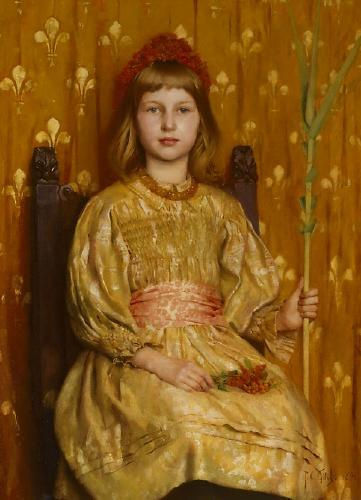
My crown and sceptre

Heir to all the Ages

Study of a Young Woman

The Child Enthroned

Destiny

Death the Bride

The Dancing Lesson

The Mother Enthroned

A Cottage Interior, Newlyn

The Awakening

The Message

Monseigneur Love

Holy Motherhood
Evelyn De Morgan
1855 - 1919
Evelyn De Morgan (30 August 1855 – 2 May 1919) was an English painter associated early in her career with the later phase of the Pre-Raphaelite Movement, and working in a range of styles including Aestheticism and Symbolism. Her paintings are figural, foregrounding the female body through the use of spiritual, mythological, and allegorical themes. They rely on a range of metaphors (such as light and darkness, transformation, and bondage) to express what several scholars have identified as spiritualist and feminist content. Her later works also dealt with the themes of war from a pacifist perspective, engaging with conflicts such as the Second Boer War and World War I.

Photo of Evelyn De Morgan

Our Lady of Peace
1907
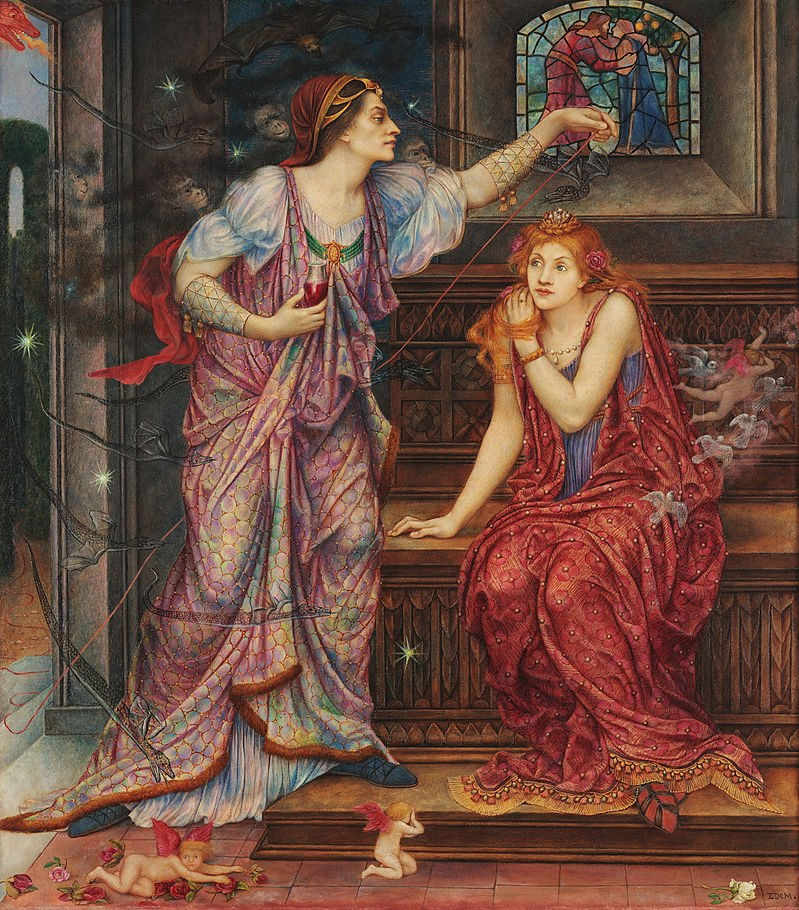
Queen Eleanor and Fair Rosamund

Night and Sleep
1878

The Storm Spirits
c. 1900

The Love Potion
1903

Helen of Troy
1898

Cassandra
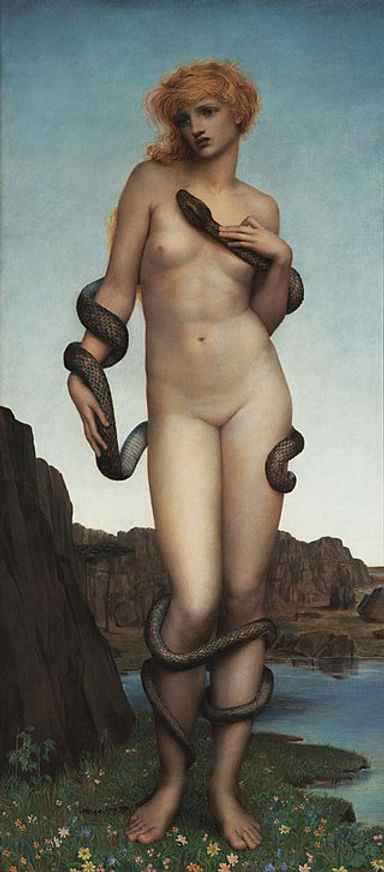
Cadmus and Harmonia

The Gilded Cage
1919
Frank Cadogan Cowper
1877 – 1958
Frank Cadogan Cowper
(16 October 1877 – 17 November 1958) was an English painter and illustrator of portraits, historical, and literary scenes, described as "The last of the Pre-Raphaelites".
Cowper was born in Wicken, Northamptonshire, son of an author and early pioneer of coastal cruising in yachts, Frank Cowper, and grandson of the rector of Wicken. He first studied art at St John's Wood Art School in 1896 and then went on to study at the Royal Academy Schools from 1897 to 1902. He first exhibited at the Royal Academy in 1899, and achieved critical success two years later with his An Aristocrat answering the Summons to Execution, Paris 1791 (1901). In 1902, he spent six months studying under Edwin Austin Abbey before travelling to Italy.
He worked in both watercolours and oils, and also worked as book illustrator – providing the illustrations for Sir Sidney Lee's The Imperial Shakespeare. He contributed to a mural in the Houses of Parliament in 1910 along with Byam Shaw, Ernest Board and Henry Arthur Payne.
As art fashion changed Cowper increasingly exhibited his portrait paintings but still continued to produce historical and literary works.
He retired from London to Gloucestershire. His The Ugly Duckling was voted the favourite painting by visitors to the Cheltenham Art Gallery & Museum in 2005.
The record price for a Cowper painting at sale is £469,250 for Our Lady of the Fruits of the Earth (1917) at Christie's in London on 17 December 2011.
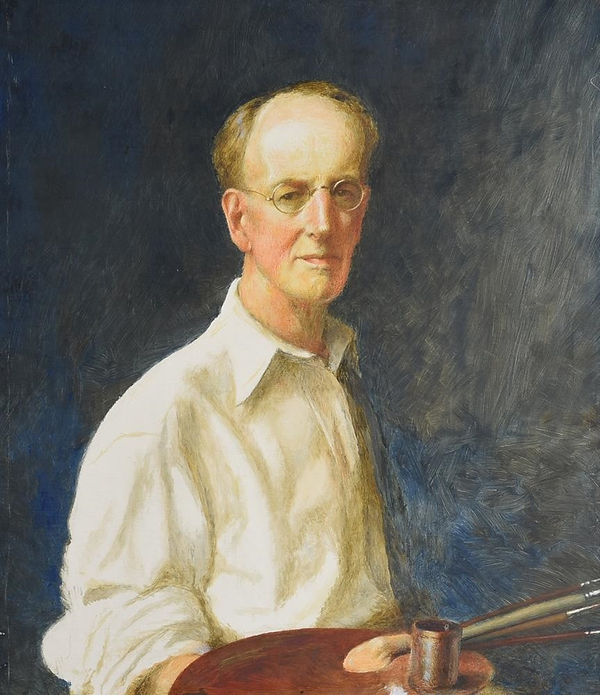
Self-portrait of the artist (1899) - Frank Cadogan Cowper

Molly, Dutchess of Nona
Frank Cadogan Cowper
1905

Vanity
Frank Cadogan Cowper
1907
Rapunzel
Frank Cadogan Cowper
1908

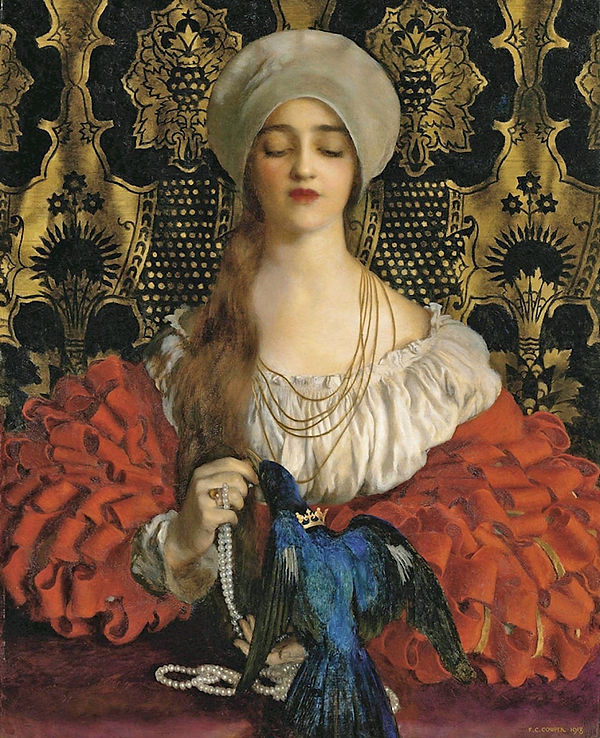
The Blue Bird
Frank Cadogan Cowper
1918

Vanity II
Frank Cadogan Cowper
Original Title: Vanity
1919

Titania Sleeps
Frank Cadogan Cowper
1928
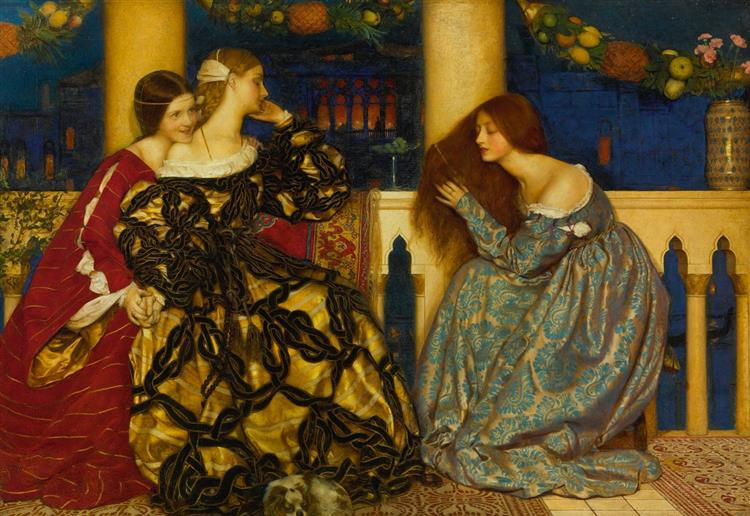
Venetian Ladies Listening to a Serenade
Frank Cadogan Cowper

La Belle Dam Sans Merci
Frank Cadogan Cowper
1924

The Golden Bowl
Frank Cadogan Cowper
1956

Mariana in the South
Frank Cadogan Cowper

Mariana in the South
Frank Cadogan Cowper

Lancelot Slays the Caitiff Knight Sir Tarquin and Rescues the Fair Lady and the Knight in Captivity
Frank Cadogan Cowper

The Ugly Duckling
Frank Cadogan Cowper